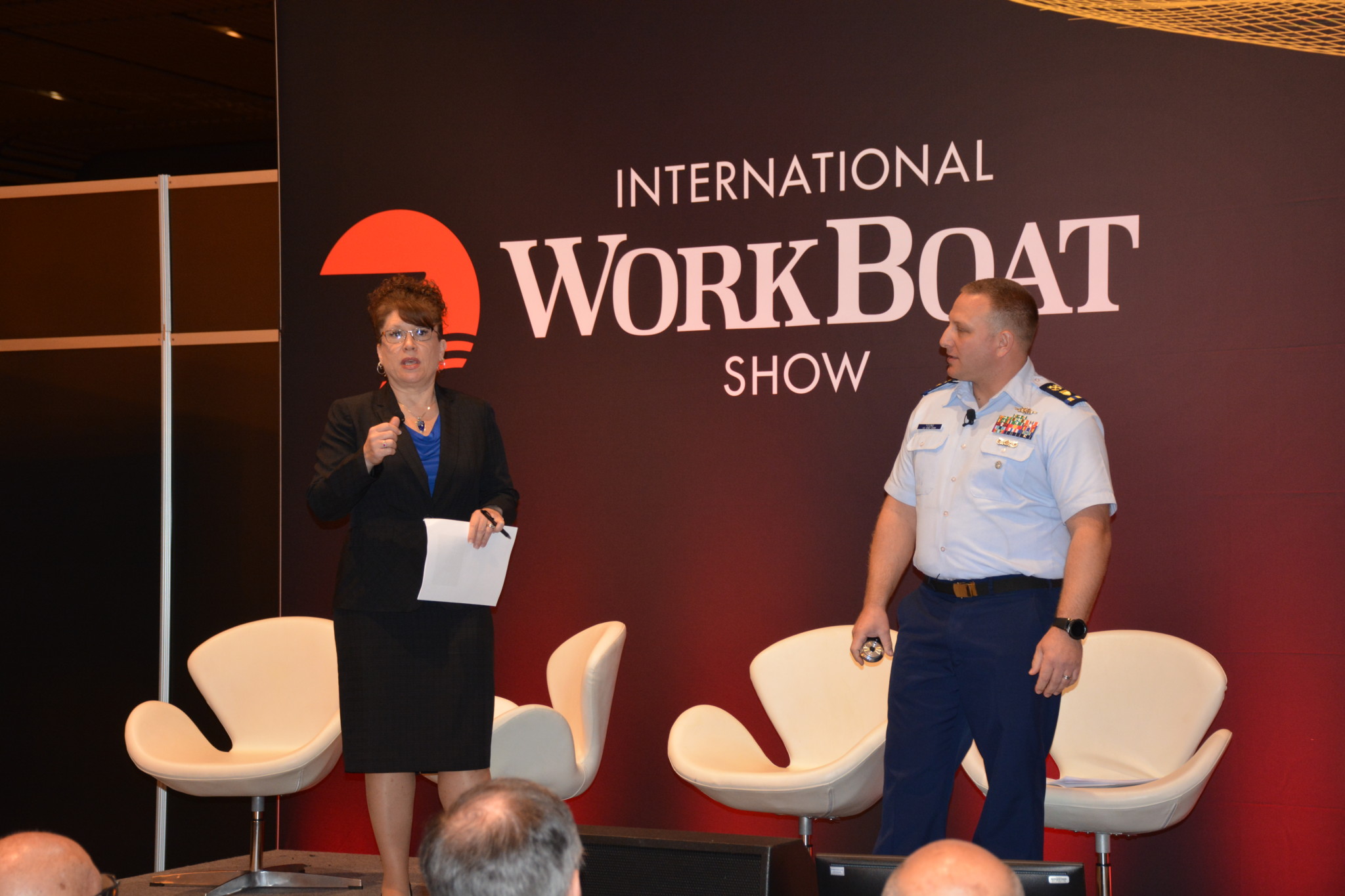The Coast Guard is moving closer to finalizing a plan to replace its aging inland cutter fleet within the next 10 years, said Aileen Sedmak, assistant commandant for acquisition for the Waterways Commerce Cutter (WCC) Program.
Sedmak addressed a standing-room-only audience of shipbuilders and equipment manufacturers at a “Think Tank” session at the International WorkBoat Show in New Orleans on Wednesday. During the last year the WCC program has engaged in engineering and cost-benefit analyses to establish top-level requirements, and it has set a 2021 target date for issuing Requests for Proposals for three types of cutters—river buoy tenders, inland buoy tenders and inland construction tenders.
The need for new vessels to operate on western rivers and inland waterways is critical. Tyler M. Young, the Coast Guard’s Aids to Navigation and Icebreaker Platform manager, said that the existing fleet of 35 cutters has an average age of 55 years, which results in increased maintenance costs, decreased operational ability and habitability concerns. The current cutters, he said, are full of lead and asbestos and accommodations are not conducive to mixed gender crews.
Analysis is still ongoing, but the team has settled on monohull configurations with three variants: 170’ – 180’ for river buoy tenders, 150’-160’ for inland construction tenders and 100'–120' for inland buoy tenders, all with shallow draft, a speed of 11 to 13 knots and specific maneuverability requirements. “We want to be able to approach a buoy that is in four feet of water, 20 feet back from the bow without touching the bottom,” Sedmak said.
The plan calls for as much commonality as possible in the river buoy and construction tenders, which need to be developed under a design-build contract. “We did not see anything out there that meets our needs,” Sedmak said. That is not the case, however, for the smaller inland buoy tenders. “We are looking to see if commercial vessels could meet our specifications or could do so with minor modifications,” she said.
Prior to the release of the RFP, the Coast Guard will invite industry representatives to come aboard some current vessels and see the mission in action. Decisions about the number of vessels to be built and the overall budget are still pending.
The acquisition schedule, which could change as specs are refined, calls for a 2021 release of RFPs; contract awards in 2021 and 2022, with the first vessel of each type delivered and operational for testing in 2025, and full operational capacity by 2030. This may change, Sedmak said, based on the quantity needed and the production rate.




